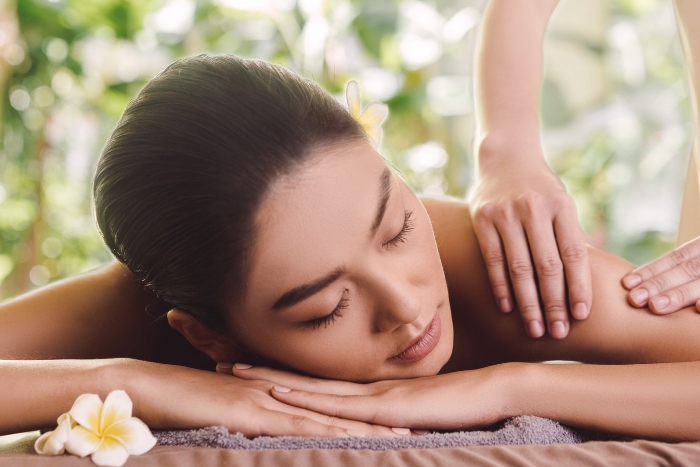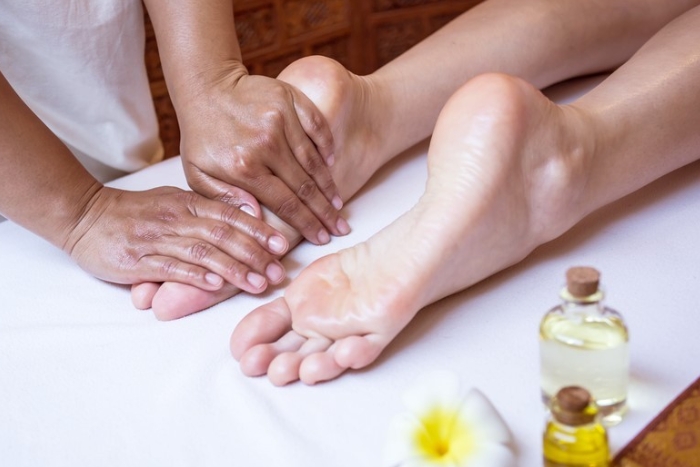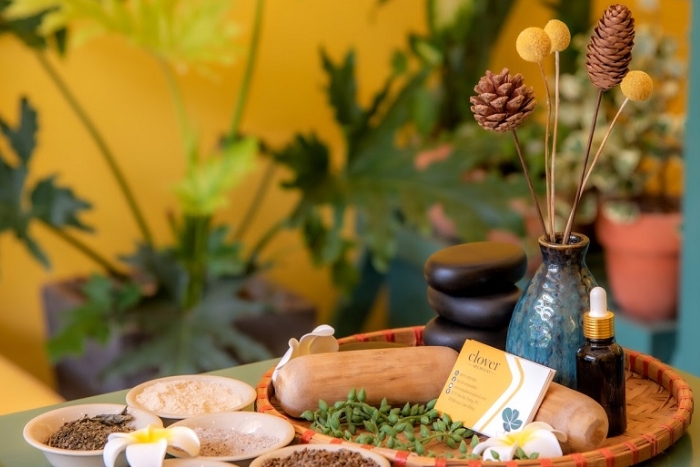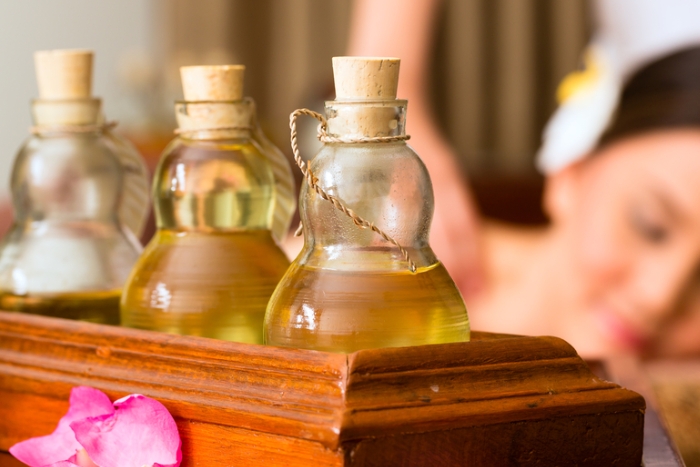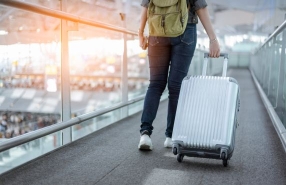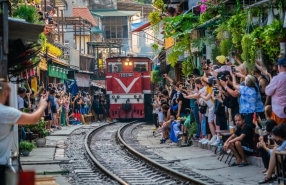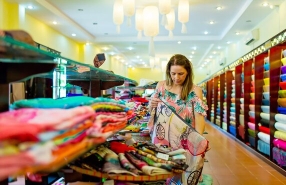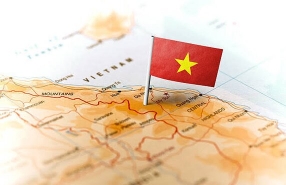
Vietnamese massage has been an integral element of Vietnamese culture for centuries, providing distinctive and rejuvenating experiences that leave visitors feeling revitalized, refreshed, and restored. This practice seamlessly blends ancient healing techniques with contemporary spa treatments. So what is attractive about massage in Vietnam and what types of massage are there in Vietnam? Let's explore about massage in Vietnam with Autour Asia in the article below!
I. What is the massage in Vietnam ?
Massage in Vietnam is a healing practice where the therapist manipulates the soft tissues of the body, such as muscles, tendons, ligaments, and connective tissues. People often turn to massage for relaxation, stress reduction, and to enhance their physical well-being. There are various massage techniques, each with its unique methods and advantages.
II. Types of massage in Vietnam
Vietnam is famous for its many diverse massage therapy methods, each of which has its own advantages. The most popular forms of massage techniques in the city include :
1. Traditional Vietnamese Massage
This represents a traditional Vietnamese massage approach that integrates a variety of techniques, including acupressure, deep tissue massage, and stretching. Its objective is to alleviate muscle tension, enhance blood circulation, and improve overall health.
In Vietnam, traditional massage holds deep roots in the culture, featuring a diverse range of techniques for both therapeutic and relaxation purposes. A prominent form within this tradition is Vietnamese massage, often referred to as "Vietnamese massage." This method harmonizes acupressure, deep tissue massage, and stretching to alleviate stress, promote circulation, and contribute to overall well-being.
2. Foot Massage
Vietnamese foot massage serves not only as a recognized therapeutic method but also as a proactive measure for maintaining good health and preventing diseases. This traditional and widely embraced form of therapy concentrates on the feet and lower legs. Typically commencing with a soothing foot soak in warm water infused with herbs, salts, or essential oils, the initial step aims to soften the skin and ready the feet for the massage.
During foot massage, therapists may incorporate kneading, stretching and rubbing techniques to release tension and improve circulation. The ultimate goal is to invigorate energy flow and establish balance within the body, fostering a sense of relaxation and overall well-being..
3. Herbal Massage
The popular type of massage that helps improve health very well among all types of massage is Swedish massage. This is a gentle full-body massage, an ideal choice for those new to massage, those who are often stressed and sensitive to touch. Swedish massage will help you improve muscle tension and relax your muscles.
While commonly associated with gentle techniques, it's important to note that stronger force techniques in Swedish massage are precisely targeted to specific impact points. These techniques aim to reduce muscle tension and enhance blood circulation. The massage therapist incorporates various movements, including kneading, long-distance pulling toward the heart, deep circular motions, vibration techniques, passive joint movements, and more.
4. Hot Stone Massage
One frequently encountered and widely favored massage variant at numerous spas and massage centers is the hot stone massage. During this treatment, practitioners strategically position heated stones on the spine, back, neck, and legs to induce a profound sense of relaxation.
Complemented by precise pressure applied to tissues and muscles, the therapy is designed to ease tension and alleviate discomfort effectively. The popularity of this method can be attributed to its swift and efficient approach in addressing various aches and pains.
5. Oil Massage
Oil massage is a therapeutic practice that employs the application of specialized oils to facilitate smooth, gliding movements across the body. Skilled massage therapists utilize various techniques, including kneading and long strokes, employing either their hands or other body parts. The incorporation of oil serves the dual purpose of minimizing friction between the therapist's hands and the client's skin, resulting in a seamlessly comfortable massage experience.
The use of oil in massage serves several purposes. Not only does it help provide a more enjoyable and frictionless massage, but it can also provide additional benefits to the skin. Some massage oils may contain essential oils with therapeutic properties, contributing to relaxation and stress reduction. The choice of oil can be tailored to the client's preferences or treatment needs.
6. Thai Massage
Thai massage, akin to Vietnamese massage, places a stronger emphasis on muscle tension and incorporates pressure points reminiscent of yoga. It stands out as an excellent method for enhancing flexibility and alleviating muscle tension.
In traditional Thai massage, the emphasis often lies in applying firm pressure, stretching muscles and tendons, addressing the entirety of the body. This approach is particularly effective in alleviating pain symptoms, promoting blood circulation, and fostering an overall sense of comfort.
III. Useful tips for enjoying massage services in Vietnam
1. Inform your therapist about any medical problems
Prior to your massage in Vietnam appointment, it is imperative to inform your therapist about any existing medical conditions or injuries you may have. This proactive communication ensures that your therapist can customize the massage to meet your specific needs, steering clear of any positions that might lead to discomfort or exacerbate existing injuries. This collaborative approach enhances the overall effectiveness of the massage session, prioritizing your well-being and comfort.
2. Talk with the therapist
Maintain an open dialogue with your therapist during the massage, discussing aspects such as pressure, pressure points, and any discomfort you may experience. This communication is essential as it enables the therapist to personalize the massage according to your preferences, ensuring a more effective and satisfying session.
3. Avoid eating a large meal before your massage
To optimize your massage experience, it is advisable to avoid consuming a substantial meal immediately before your session, as this can lead to discomfort during the massage. Instead, opt for a light snack at least an hour prior to your appointment. This practice ensures that your body is comfortably nourished without the potential discomfort associated with a heavy meal, allowing you to fully enjoy and benefit from your massage session.
Ultimately,
massage in Vietnam offers a unique and rich experience, from its roots in ancient medicine to its modern-day appeal as a method of relaxation. In Vietnam, visitors have the opportunity to explore a range of massage services tailored to their individual needs and preferences, owing to the abundance of techniques and styles on offer. If you want to know more useful information about Vietnam travel, don't hesitate to visit the website of
vietnam travel agency here!

